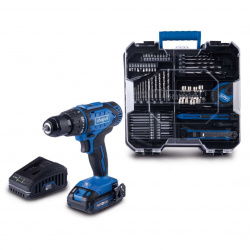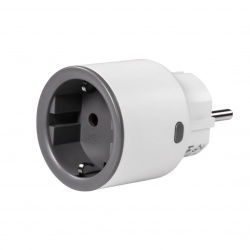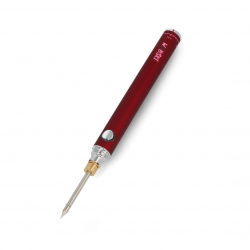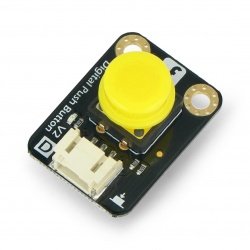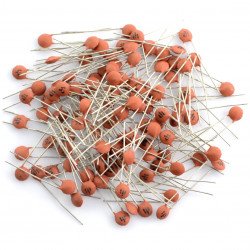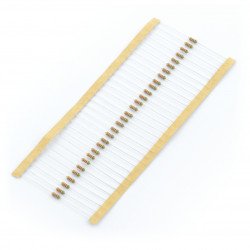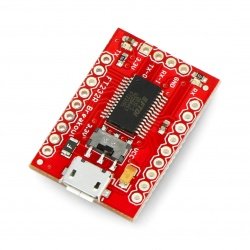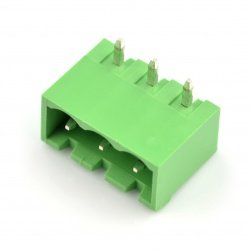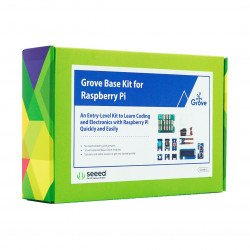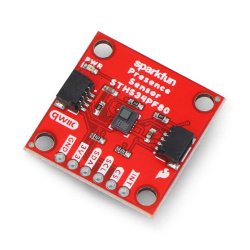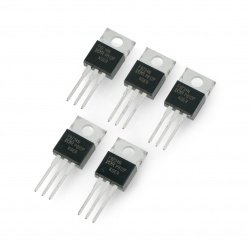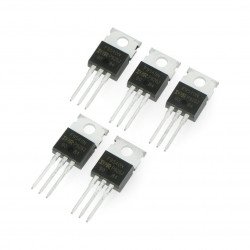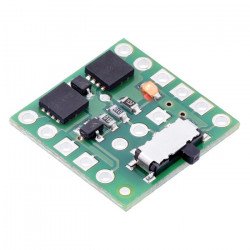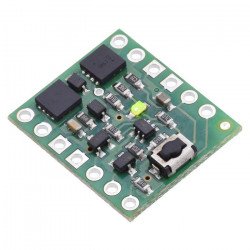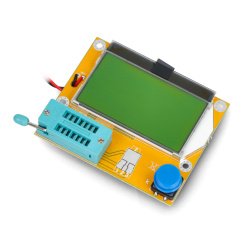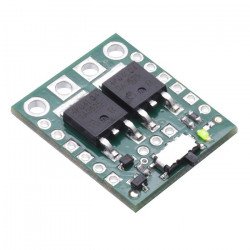Transistors unipolarne MOS transistor with a channel type R.
P MOSFET
P-MOSFET transistor IRF4905 -55V/-74A - THT
The IRF4905 transistor is a high-current P-MOSFET electronic component with a maximum drain-source voltage of -55 V , drain current of -74 A and power dissipation of 200...Transistor P-MOSFET IRF9540 - THT - 5pcs
Vds: 100V. ID: 23A. Case: TO-220. Price for 5 pcs of the transistors.Mini switch Slide MOSFET LV 2-20V/6A - with protection before reverse current - Pololu 2810
The executive module with a MOSFET transistor with a pair of channels P to control devices with higher current consumption than allowed by the control system, for example, a...Large switch Slide MOSFET MP 4,5-40V/8A - with protection before reverse current - Pololu 2814
The executive module with a MOSFET transistor with a pair of channels P to control devices with higher current consumption than allowed by the control system, for example, a...Large switch Push MOSFET MP 4,5-40V/8A - with protection before reverse current - Pololu 2812
The module with a button as an alternative to the mechanical buttons. The switch is bistable, one push turns on the power, and one more press turns it off. Additional inputs...Mini switch Push MOSFET SV 4,5-40V/4A - with protection before reverse current - Pololu 2809
Pushbutton module as an alternative to mechanical buttons. The switch is bistable, one press turns the power on and another press turns it off. Additional inputs enable e.g....Transistor P-MOSFET IRF9640 - THT - 5pcs
P-MOSFET field transistor with VDSS 200 V and maximum drain current ID 11 A . The whole is enclosed in TO220 housing. The element is designed for THT threaded...Large HP MOSFET Switch 4.5-40V/16A - with back current protection - Pololu 2813
Push button module as an alternative to mechanical buttons. The switch is bistable, one press switches on the power supply and another press switches it off. Additional inputs...Test kit, THT electronic components tester - BTE-056
Kit for testing and recognition of electronic components such as PNP, NPN bipolar transistors, MOSFET transistors with P and N channels and diodes. Built-in screen allows to...Mini switch Slide MOSFET SV 4,5-40V/4A - with protection before reverse current - Pololu 2811
The executive module with a MOSFET transistor with a pair of channels P to control devices with higher current consumption than allowed by the control system, for example, a...Large switch Slide MOSFET HP 4,5-40V/16A - with protection before reverse current - Pololu 2815
The executive module with a MOSFET transistor with a pair of channels P to control devices with higher current consumption than allowed by the control system, for example, a...See also
What do we offer in this category?
The basic products in this category are single P MOSFET transistors made in THT and SMD technologies. We offer sets of five pieces for surface mounting and a choice between sets of 5 pieces and single transistors intended for through-hole mounting. Our offer also includes practical kits for testing and recognizing various types of electronic components. Mainly bipolar and unipolar transistors, diodes, resistors, capacitors and inductive elements can be recognized. Thanks to the well-thought-out design of the device, the user can examine both THT and SMD components. The built-in LCD display will display detailed information about the type of element and its parameters. The device has dedicated stands for THT and SMD components, is equipped with two buttons (“Test” and “Off”) and is powered by a 9-volt 6F22 battery. The range includes several products of this type - some of them can also be used as a frequency meter or a square pulse or PWM signal generator. Executive modules with MOSFET transistors from the well-known Pololu company are also available. The supply voltages of such devices range from several to several dozen volts (depending on the model). These types of devices have protection against reverse voltage and are small in size, and if necessary, they can connect several such elements together. Additionally, thanks to the well-thought-out design, you can set the option to turn it off yourself or control it using external digital devices. However, please remember that the switches have a limited voltage range - in the event of a power failure, the status will be set to "off". It is also worth noting that the device does not provide full isolation when the "off" state is active: a small amount of current may still flow.
P MOSFET transistors
After adding atoms of an element having one more valence electron than in silicon (donors) to silicon, an N-type semiconductor will be created. The situation is analogous when atoms of an element having one less valence electron (acceptors) are added to silicon - an N-type semiconductor will be created. P. MOSFETs are P-channel transistors - the substrate has doped donors, while the drain and source have doped acceptors.
Application of MOSFET transistors
MOSFET transistors work best in systems with the lowest possible voltage. Their big advantage is very low resistance when the channel is open, thanks to which losses in this place also remain at a very low level. They require a very small amount of electricity to operate efficiently and consume virtually no power at the gate. They are most often used as amplifiers or switches, and are also often used in microprocessors or in the so-called CMOS (Complementary Metal-Oxide Semiconductor) gates. In student projects, they can be used to switch on motors operating at higher voltage and to switch on LED diodes. The very high speed when switching states and high impedance described earlier are the reasons why such elements work perfectly in many projects in the field of digital electronics.
MOSFETs are resistant transistors
It is worth paying attention to the durability of MOSFET transistors, which results from their construction. First of all, these types of elements are free from the so-called second puncture phenomenon. These elements are resistant to many unfavorable conditions, but it is worth knowing their weak points. Before connecting, pay attention to the permissible power of generated losses as well as the collector voltage and current - exceeding these values will unfortunately most often result in permanent damage to the element. It is also very important to remember about the high sensitivity of MOSFET transistors to electrostatic charges - even a current with a potential difference slightly greater than 20 V can damage the element. Therefore, it should be stored in a special conductive sponge in an antistatic cover. Before starting work, it is also a good idea to unload your body and the tools you will use to perform the task (soldering iron, tweezers, etc.). These are unique properties that may suggest the delicacy of such elements, but their high durability is why they are so often used in many devices. All you need to do is take appropriate precautions when assembling and selecting individual elements (taking care not to exceed the permissible values).
P MOSFET - FAQ
MOSFET P is a transistor with a P-type channel - this means that the substrate is doped with donors, while the drain and source are doped with acceptors. To fully understand how it works, it is worth reading the article that describes it .
Transconductance is the basic parameter of MOSFET transistors , which is worth paying attention to when purchasing a transistor. It determines the strengthening properties of this element.
"Mosfets", i.e. MOSFET transistors, are widely used in today's technology, but are most often used as switches or voltage amplifiers.
MOSFETs are popularly used as switches and voltage amplifiers. This is because they have very low energy consumption. It is especially worth using MOSFET transistors in devices where the amount of energy consumed is very important - for example, in devices operating on battery power.































































































































































































































































































































